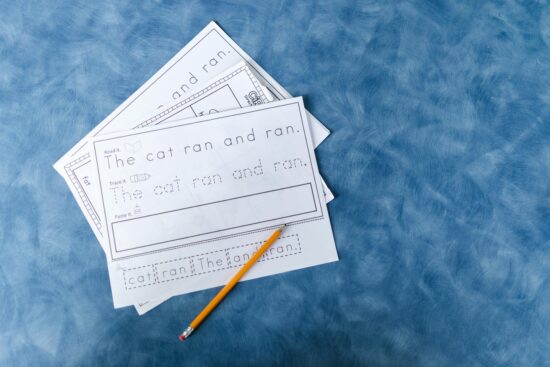Dyslexic children often benefit from a homeschool environment. It’s calmer, more focused, and there’s a lot more of the teacher’s attention to go round!
But as the teacher, you might feel a little off course when it comes to supporting your child with learning. It’s OK to admit it if you do; it’s called a learning difficulty for a reason.
And knowing your child needs more support is the first step in actually getting it for them. If that’s something you’re trying to provide right now, the tips below are good starting points to try.

Give Them More Time
Time runs in short supply in a lot of school environments. When you walk into class, there’s about 40 or so minutes before the bell rings and you’re out again. That doesn’t leave much time to wrap your head around things, especially if your brain works a little bit differently.
If your child has dyslexia, and it’s given them quite a few obstacles to hurdle over, the main thing to do is slow down. Let them take their time, and even bump the next lesson on your schedule for another hour.
Use Some Fun Phonic Workbooks
Sometimes the best learning support is just making the work more fun! When kids have something more interesting and/or entertaining to respond to, the difficulties of written language and reading comprehension become far less intimidating.
Phonic workbooks are great for supporting kids with dyslexia.You can buy them on all kinds of different topics that appeal to kids, like animals or superheroes. That’s the first big tick.
But the second is the fact that you can buy workbooks focusing on various specific elements of reading and writing. For example, if your child is struggling to understand letter sounds, a set of Digraph Words and Digraph Worksheets could really help them.
At the very least, you can sustain your child’s attention, which gives them more of a chance to understand what they’re looking at. On top of that, it’s much easier to help your child work with their dyslexia when they’re far less frustrated about the work they have to do!
Pick Up on Your Child’s Learning Quirks
Learning is a unique thing to everyone. We all do it in our own way, even with the standardised idea of teaching most people go through from ages 5 to 18.
But when you’re working so closely with your child, you’re likely to pick up quite quickly on the quirks they have in their learning style. Knowing these is a massive benefit when you’re trying to help them with the challenges dyslexia presents!
Understanding what your child learns from, how they process information, and how things need to be presented to them in order for them to understand, will give you a lot more power in creating the right curriculum for them.
Dyslexia is a complicated issue to deal with, even when homeschooling. Use these tips to put the right support package together.